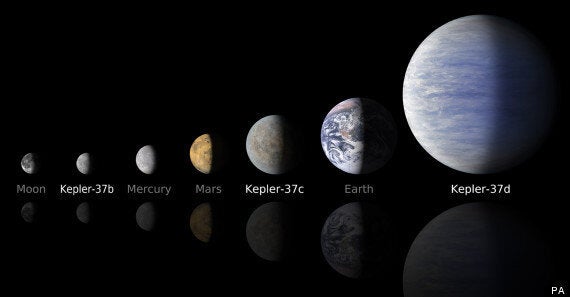A mini-world the size of the Moon is the smallest planet yet discovered beyond the Solar System.
The hot, barren planet orbits a Sun-like star called Kepler-37 and is thought to be a smaller version of Mercury.
Until recently, "exoplanets" found orbiting stars have tended to be Jupiter-like "gas giants" because these are easier to detect.
But newer techniques are now turning up increasing numbers of small, rocky planets.
Such worlds offer the best chance of finding life among the stars. The new planet is believed to be far too inhospitable for life, but considered special because of its small size.
Orbiting very close to its parent star, it is likely to have no atmosphere and a surface blasted by heat and radiation.
The planet was detected by the Kepler space telescope during a survey of more than 150,000 stars in our galaxy, the Milky Way.

Kepler is designed to measure the tiny dimming of starlight that occurs when a planet moves across a star's surface.
British scientists at the University of Birmingham were part of the international team that analysed the data.
An advanced technique focusing on seismic vibrations from the star, which cause fluctuations in brightness, was used to determine the size of the planet with great accuracy.
Professor Bill Chaplin, from the University of Birmingham's School of Physics and Astronomy, said: "This research shows for the first time that other stellar systems host planets much smaller than anything in our solar system. This helps us to put our own solar system into a wider context."
The research is reported today in the journal Nature.
Three planets are known to orbit Kepler-37. Two are smaller than the Earth while the third is twice the Earth's size.
The new planet, Kepler-37b, is the innermost planet and about 80% the size of Mercury. It is the first exoplanet found to be smaller than any planet orbiting the Sun.